Barely 6 weeks after enlisting in the 43
rd
Battalion of the AIF, Frank found himself on 15 December 1916 on board the S.S Berrima on route for England via the Cape of Good Hope. As Lance Corporal FHO Dealy he was part of the 6
th
Reinforcement of that battalion – testament to the dreadful losses already suffered by the AIF in France and on the beaches at Gallipoli. Departure from Adelaide just before Christmas must have been especially hard for Anna May let alone her elder son. One of the bits in her black box, kept for the rest of her years is a broken piece of red, white and blue paper ribbon with a note "
……piece of streamer which was broken when Frank’s ship left the outer harbour at Adelaide. Hundreds where attached to the ship and held by relations on shore until they broke as the ship gathered way. Margaret held the shore end of this one."
From that moment on the few remaining family in Australia had now to rely on letters and post cards from Frank and Sydney as the sole means of communication. With luck there might be also a few letters from family in England with whom the brothers had brief contacts whilst on leave. And of course there were telegrams and telephones, but these were as yet only primitive tools and used only in emergency. And that was to be all the contact that could be realised until the unknown course of the Great War had been decided at some indeterminable point in the future with very distant hopes of reunion sometime after.
The voyage to England took about 6 weeks and must have been a hard one. The voyage passed through the Atlantic in the Northern winter gale season and Frank was travelling as a low ranking NCO in the bowels of the steamer cooped up in a cabin with at least 7 other matey "diggers".
Yet he found time and the solitude to write.
"Evening" was one of his surviving efforts that saw the light of day in the 1917 old School magazine. It was written somewhere between Durban and Cape Town:
Evening
The evening shadows creep o’er distant peak
That, crowned with shimmering gold and purple flecked,
Soars aloft as other realms to seek,
The noblest of all Nature’s great elect!
The pall of night descends upon the sky,
Clothed in radiant hues of transient form:
The hills in colour steeped, flash forth reply
"Welcome to thee sweet night, we rest ‘til dawn!".
The sun’s last rays light up the hilly slopes;
A wondrous murmur fills the misty air,
My soul in sympathy, is filled with hope.
For joy and peaceful rest are everywhere!
The S.S Berrima probably arrived in England in late January or early February to disembark its military passengers in a cold and dampening English winter. Maybe this crowded troopship docked at Southampton or Liverpool, or perhaps London. There is no record, but as a soldier of no high rank, Frank and his comrades in arms would have disembarked and entrained directly to some military camp. No doubt his lot for the next few weeks would be to live in one of the many old wooden, drafty barrack huts built in some dreary wartime Army encampment possibly on the bleak and uninviting Salisbury Plain. The prospect was grim, but at least he was relatively safe in England and close to family and old school friends.
In fact, he trained in England for nearly 7 months and did not cross the Channel with other reinforcements for the 43 rd Battalion AIF until 17 th July 1917. This was just over a year plus 17 days after the start of the battle of the Somme when the war had really begun to harvest huge numbers of his generation….. he crossed on the day Churchill was appointed as Minister of Munitions by the then Prime Minister Lloyd George.
During those months in England he applied to join brother Sydney in the Australian Flying Corps. But he was turned down because his eyesight was apparently not good enough for piloting an aeroplane. Yet it was judged good enough for his serving as an observer! A curious contradiction in the standards required. Unfortunately and to his intense disappointment there was no demand for observers at the time. So he returned to his duties as an ordinary Digger and an uncertain future in the trenches.
One cannot but wonder why it was that despite his obvious leadership and intellectual abilities he did not aspire to commissioned status. Maybe he was overlooked by the unreasoning and possibly unobservant military?
But perhaps, and more likely, it was a personal thing for him.
Frank frequently expressed a disliking for a military life. It was probably only his clear sense of duty that carried him forward. His intentions beyond the War were to take up an opportunity at Oxford University and then eventually return to Australia. But for the moment he had to face the demands of an uncertain future as a very small cog in the military machine. He constantly, perhaps to deny an inner foreboding of a more likely certainty, expressed the opinion that he would always "pull through".
By mid 1917 preparations on the grand scale were in hand for the British offensive in Belgium at Ypres. Frank’s Battalion was destined to play a part in this but not until after the early successes of July had turned into the nightmare of Paschendaele in the autumn. His reinforcement party was just one tiny input in the lead up to the immense battle of that autumn and the consequent monstrosities of its outcomes.
In the higher scheme of things, there were at the time high hopes of a decisive victory from this fourth Battle of Ypres. This unreasonably "grew with every step away from the British front line and reached absolute conviction in the Intelligence Department"
Reasoned justification and the planning of the offensive in the remote and highest reaches of the British Government and the High Command under Haig and Robertson reportedly were stultified by erroneous argument about the value of the Channel Ports. The argument " ……confused the issue, it darkened counsel, it numbed misgivings, overpowered the dictates of prudence and cleared the way for the forlorn expenditure of valour and life without equal in futility.
Frank was inevitably involved in the Battle of Ypres. He must have taken part in the fighting at various times, but the only certain record is an entry confirming 4 October 1917 as a day when he was definitely in the thick of things. At some point he was gassed, but evidently only slightly as he continued on active duty right through to the beginning of March 1918.
His poem records that day.
Ypres – 4 October 1917
As on they pressed in lines extended,
Across the still torn sodden ground,
Past blasted trees and human forms,
I paused awhile and gazed around,
Scarce master of my thoughts, a pawn
In the mighty venture not yet ended.
As I looked I strove to understand
The meaning of those outstretched forms
That lay in muddy bloodstained pools,
Limbs still trembling with features drawn-
And solemnly I cursed the fools
Who try yet in vain to understand…..
The offensive in Ypres was not called off until appalling losses eventually forced the British High Command to concede that nothing further could be usefully gained by continuing. They had gained perhaps a dozen miles and the now totally destroyed Paeschendaele for a total of 400000 casualties. General Robertson…CIGS and the chief military advisor to the Cabinet and the supporter of endless attacks long after they proved inconclusive was quoted as saying afterwards " I confess that I stick to it more because I see nothing better and because my instinct prompts me to stick to it, than because of any good argument by which I can support it." Terrible words indeed.
Somehow Frank survived all this travail and retained his sanity and the will to carry on.
There is no record of what he was doing in the months that followed, but in late February 1918 he was sent home for the first time on leave to "Blighty". There is a photograph of him taken in Hemstal Road Hampstead in London, where he must have been staying initially. He is in uniform, smoking a cigarette and looking remarkably fit and cheerful. It was taken shortly after he had gone up to visit Stonyhurst and to meet brother Sydney and see something of his old Alma Mater. He had just returned to London after his trip to Lancashire, only to be called back again one day later by the news of Sydney’s death in Ayrshire.
That must have been a body blow for Frank….his relationship with Sydney was more than just that of an elder brother. He and Sydney had obviously always been close and their affectionate regard for one another had been built over the years together at Stonyhurst and Roseworthy. Frank always ahead by one year, setting the example and glad to see Sydney excel even at the same things he did so well at himself.
The military allowed Frank a few extra days leave to attend Sydney’s funeral, but inevitably he was drawn bac k later that month into the maelstrom that had now erupted in France. The German Armies under Ludendorf attacked the British front on 21 March 1918 and within the space of just 6 weeks regained all the ground and more that the British had won over 3 years of bloodstained and ill directed and wasteful effort.
Grandmother’s box contains no records of what Frank was doing in that battle other than his being involved at Armentieres. He was probably back in his Battalion by the time of its involvement in the Battle of Lys where the Germans had commenced the third phase of their offensive on 9 April 1918. At any rate the Australian Divisions (including the 11 th Brigade of the 3rd Division of which 43 rd Battalion AIF was a part) were sent pell mell into the southern sector around Armentieres with others to stem the German onslaught.
It was a desperate time for everyone involved.
The 11 th April order from Field Marshall Douglas Haig reflected this: "There is no course open to us but to fight it out. Every position must be held to the last man. There must be no retirement. With our backs to the wall and believing in the justice of our cause we must fight on to the end. The safety of our homes, and the freedom of mankind alike depend upon the conduct of each one of us at this critical moment."
Again there is no family record of what Frank was up to and how he managed to survive all this. But I do know that the 43rd battalion of the AIF was involved in the Battle for Hamel in July 1918. Here the battalion attacked eastwards directly towards the ruin of the village of Hamel from Hamelet some 4000 yards north of th town of Villers-Brettoneux on the southern banks of the Somme. At that time General Monash was the GOC the Australian Corps. Up to then he had commanded the 3rd Division. For the Battle of Hamel Frank's Divisional Commander was now General Gellibrand. The battle was the first in the war to use tanks, aircraft and artillery in combination with infantry and was highly successful. It has been described as the first really effective combined use of air and ground arms including tanks.John Fuller author of "The Australian Victories in France in 1918" called it the "perfect battle". ( For further reading see pages 641 et seq of Les Carlyon's book "The Great War".)
Sometime during those hellish months Frank found time to write more poetry:
Behind the Lines
Like a shroud the pall of night descends,
O’er yellow fields of ripening corn;
And shadows lengthen.
A mist, in smoke like wreaths, ascends
Above thickly clustered trees, born
From across the fen.
I sit and watch the changing sky.
Alone, I hear the distant cry
Of the homing bird.
A wondrous silence fills the air
That drives away each wrecking care
To leave an empty road.
No sound breaks the peace it brings
Save from the belfry close at hand rings
The ?vespers?
With lowered head and folded hands
Wrapt in prayer, each peasant stands
"Hail . Full of Grace!
"Unto thee this day a child is born
More glorious than the radiant morn
Sent from God to Man"
The prayer is o’er and night draws near
The sun’s fast dying rays now sear
The darkening gloom.
The creeping shadows swiftly pass
From hill to vale, from vale to hill
While nature goes to rest
Evening breezes gently stir the grass
That, subject to a higher will,
Sways at His behest.
The bit of paper on which this poem was written in pencil is signed
"With dearest love, I am your loving son,
Frank"
and is undated.
The 8 August was the start of the last great phase of fighting. This was the so called Battle of Amiens. It was to end some 4 months later in the capitulation of the Germans. Ludendorff wrote
: "The Emperor told me later on , after the failure of the July offensive and after 8 August, that he knew the war no longer could be won."
Like every soldier of the Australian Army Corps of the time, Frank received a personal message from Lt General John Monash )who was now firmly in command of the Australian Corps which consisted of the five Australian Ddivisions) on the day before the battle started. The following are prescient extracts from the message:
For the first time in the history of the Australian Army Corps all five divisions will tomorrow engage on the largest and most important battle ever undertaken by the Corps. They will be supported by exceptionally powerful artillery and by tanks and aeroplanes on a scale never previously attempted.
The many successful offensives the brigades and battalions of this corps have so brilliantly executed during the past four months have been but a prelude and preparation for this greatest and culminating effort.
I entertain no sort of doubt that every Australian soldier will rise to so great an occasion and every man imbued with the spirit of victory will, in spite of every difficulty which may confront him, be animated by no other resolve than a grim determination to see through to a clear finish whatever his task may be.
The work to be done tomorrow will perhaps make demands upon the endurance and staying powers of many of you. But I am confident that, in spite of the excitement, fatigue and physical strain, every man will carry on to the utmost of his powers, until his goal is won for the sake of Australia, the Empire and the Cause.
The battle started at 4.20 a.m. the next day. Four of the Australian Divisions were in the vanguard, the fifth being held in reserve for use later. Everywhere along the attack front but especially where the Canadians and Australians fought, they were victorious. In less than two hours 16000 prisoners and more than 200 guns were taken. By noon that day, tanks, and armoured cars and cavalry were scouring the countryside already 14 kilometres behind the original German lines.
The battle, unlike all the previous, was not bogged down in the trenches. The use of tanks on such a scale for the first time had opened up gaping holes in the German lines. Mobile warfare was achieved again overcoming the trenches, the barbed wire and the machine gun by sensible use of the new modern machines of war – the tanks.
But the lot of the infantry was as usual to rely on "shanks pony" and to move ahead either as columns of marching men or in the short panicky rushes of small groups fighting over open ground to make good the advances gained by the new tanks. Frank’s role was that of corporal in charge of a Lewis machine gun-team consisting of himself and two others. He was in "D’ Company of the 43 rd Battalion. Movement forward was relatively swift and on 21 August when the battle for Bapaume was started he was in the vicinity of Albert the town east of Amiens made famous by its Bizantine Church and the statue of the virgin that refused to fall off for three years until the German offensive of March 1918. Albert was recovered on the 22nd August . By the 25th August the 3rd Division had taken the small town of Bray.
On the morning of 26 August the Battle of Bapaume was broadened and the Australians continued their advance in concert with the British Divisions to the north on a 33 mile wide front. The 43 rd Battalion set out at 5 a.m. on this mid summer day from the town of Bray-sur-Somme towards Peronne, the aim being to deny the whole of the line of the river Somme to the Germans. By mid day, working over open country, Frank’s little team had reached, with the rest of his company the vicinity of the small village of Suzanne.
They stopped in a trench to share their rations at about 1 p .m. when a shell landed nearby and killed all three. Evidently Frank died instantly from a wound to his head caused by a searing hot fragment of shrapnel.
He and his comrades were buried in crude graves that night 1000 yards northwest of Suzanne and 7 miles west of Peronne.
Meanwhile the battle raged and rolled on continuing further advances to the east. The village of Suzanne was captured soon afterwards. But Frank’s part in the great adventure ceased that day. Finally and inevitably he had become just another casualty in that immense and seemingly ever growing list of lads who had answered the call of duty.
Frank died barely five and a half months after Sydney and just 77 days before the Armistice at the "eleventh hour on the eleventh day of the eleventh month" brought an "end of the war to end all wars".
He fell without the comfort of close family last seen nearly 2 years before. He had been allowed just one short leave in England away from the horrors of the front in France.
He was just 23 years old.
Oh poor Gran…….. the sheer waste and apparent futility of it all. So far away and still grieving the loss of one son, she was not to know what had happened to his brother for another 14 days.
Grandmother’s box preserves the fragment of grass she took from his grave a year later.
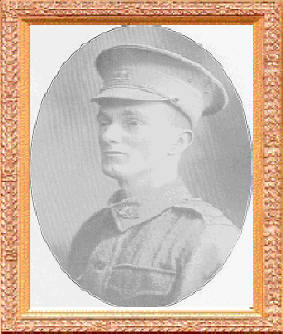
A FRAGMENT OF GRASS
"For joy and peace are everywhere"
Frank Henry Ough Dealy 1917
He was not looking at the camera when the photograph was taken. He was staring into the distance as if he was miles away in some faraway land of his own imagining. Although only twenty one, his face is mature and projects through its flatter planes, determined mouth and shrewd eyes the strong, even hard, character of the man within.
The apparent toughness of his character is accentuated by the ill-fitting peaked cap and rough woollen uniform of an Australian infantryman. This is the portrait of a man at the threshold of adventure, but already tempered by enlistment and forced association with others of a much rougher mould, products of the new and still very raw Commonwealth of Australia.
Yet beneath the portrait’s façade, it is possible to discern the softer, vague vestiges of the dreamer and the poet. He is there and yet not there – there is a reserve, almost a secretiveness about him that makes him illusive. All the photographs in which he features in the depths of grandmother’s box give the same impression. He looks at the camera and is not there, he looks away from the camera and as if he is thinking of something less immediate. For all that his is a character harder to imagine and describe.
Frank had achieved much in his days at school and university. A product of the time, he spent nearly all his early formative years at boarding school. He entered Stonyhurst College in England at the tender age of 10 and rarely saw either his mother or father until much later when he achieved a place at Roseworthy College in Adelaide. Even then contact with either parent was brief and more often by mail than actual physical nearness.
His early life was typical of most boys whose parents were serving in the far-flung parts of the Empire under Edward VII and then George V. To begin with he looked on Hong Kong as home because that was where his parents were. Later, two years after WW1 had started, home became less defined when Anna May went to South Australia to set up a separate home and find medical help for Frank’s young sister Margaret. Thomas Kirkman Dealy served on in Hong Kong until much later.
Frank Dealy was born in West Terrace, Hong Kong in 1895. In the Easter term of 1905 he entered Stonyhurst with his younger brother Sydney. In his last year at the college in 1912 he gained the Oxford and Cambridge Higher School Certificate as well as that of Matriculation. For every school year he was at Stonyhurst he won prizes for his achievements at work. In 1908 and 1909 he was awarded prizes for Latin verse. In 1909 and 1911 he won the Macauley prize for Geography. In1910 he won a prize for General Knowledge. This was a volume of the complete works of Shakespeare and is still part of the contents of Grandmother’s black box, in fact I have it open in front of me as I write almost a century later.
Frank’s mathematics was similarly recognized in 1911 and in 1912 he was awarded the Science prize for his paper in the Chemistry Higher School Certificate.
Frank’s next step gained him entry in 1912 to the State Agricultural College at Roseworthy near Adelaide. He joined the three-year diploma course in the October. There are no records of why he chose an agricultural career or why he wanted to pursue it in Australia. There is no evidence of a prior family connection with any part of Australia, let alone the relatively remote out post of Adelaide at the bottom of the continent and so far from England and Hong Kong.
Nevertheless go there in 1913 he did and he continued to achieve success both academically and on the sports field.
He improved his ranking as third in the order of merit in his first year to second in his second year and completed his last year with a first class Diploma with honours in Viticulture, Chemistry and Book-keeping. He won a government bursary in his first year at Roseworthy and when he left he was awarded the Ridley Scholarship, tenable at Adelaide University for two years. His first year at Adelaide University produced another scholarship…this time the Bagot Scholarship. .



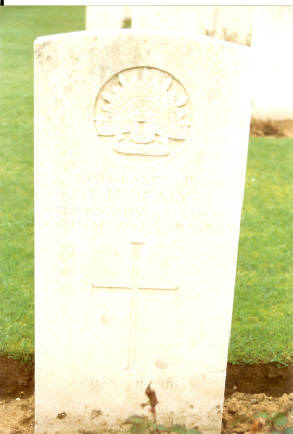
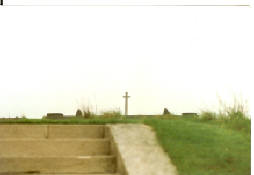
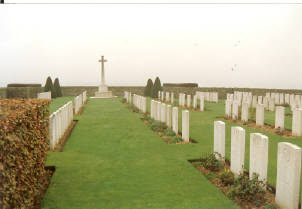
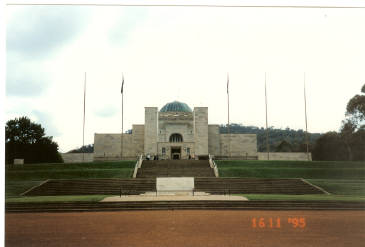
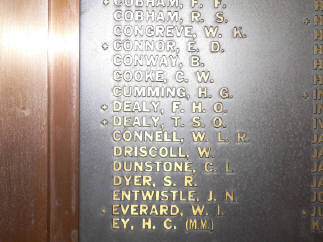
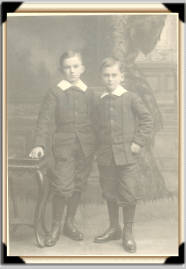
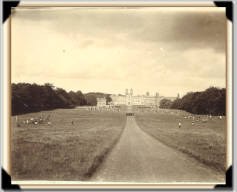
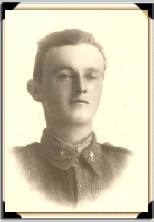
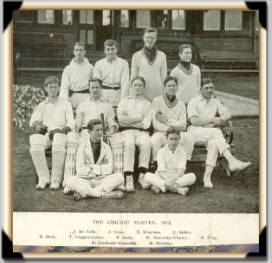
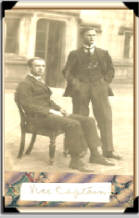

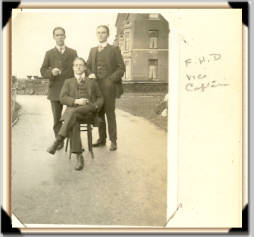
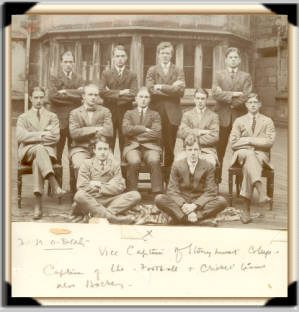
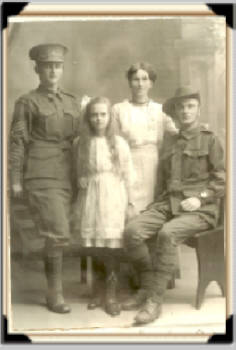
By this time mother Anna May and his very young sister Margaret had left Hong Kong and set up home in Adelaide at 45 Brougham Place. Younger brother Sydney had also followed in Frank’s footsteps from Stonyhurst to Roseworthy and then into the AIF, achieving similar successes on the way. Sydney graduated from Roseworthy in 1915 with first class honours and a handful of prizes. These included the Gold Medal for highest aggregate in all subjects, the College Prize and the Old Students Cup for the highest aggregate marks in Agriculture and Veterinary Science. He was offered the Ridley Scholarship to be taken up after his return from the war, but declined it because he wanted to begin practical work immediately it was feasible.

So both these highly promising young brothers now could find home closer to hand in the modest house in Adelaide. By then, of course they were independent, self-reliant young men. Yet the family bonds, especially with Anna May must have been not only very strong but bound by affection. Father Thomas Kirkman Dealy was still in Hong Kong and remained a remote, probably rather forbidding figure, yet evidently respected and loved by both boys
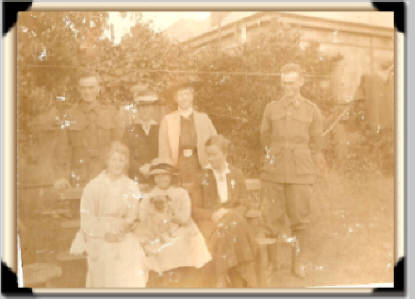
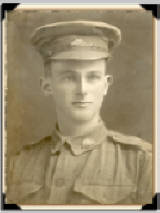
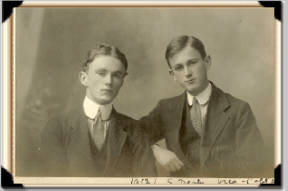


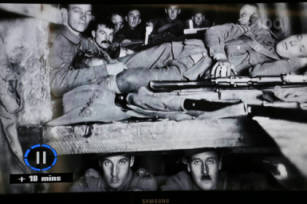
This page last modified on Sunday, December 04, 2016